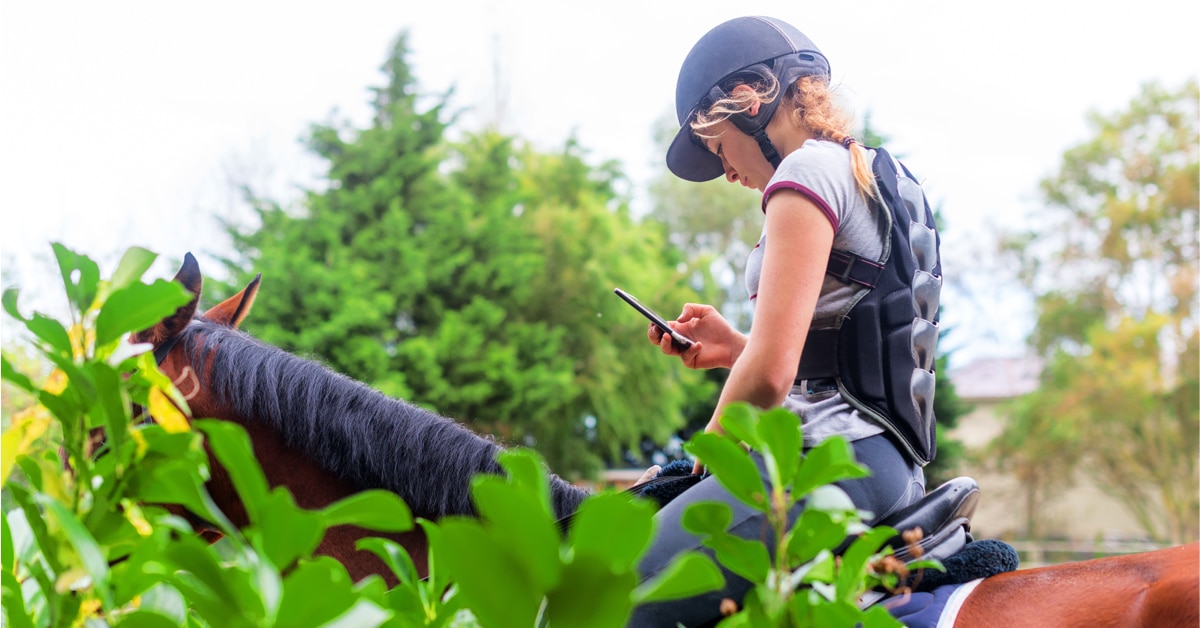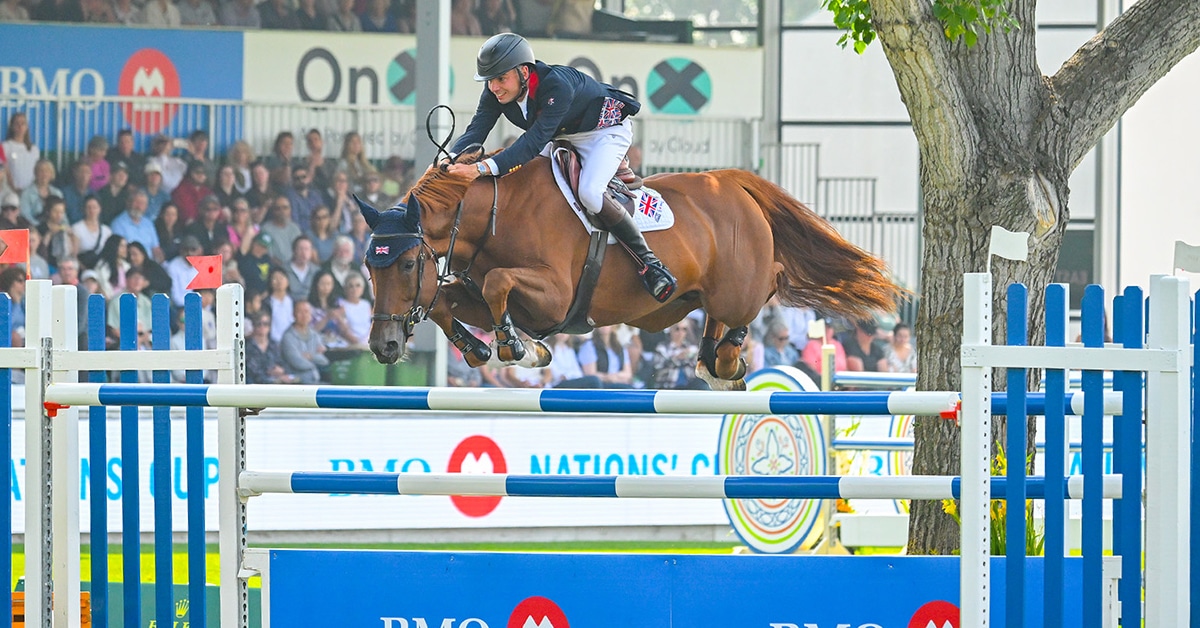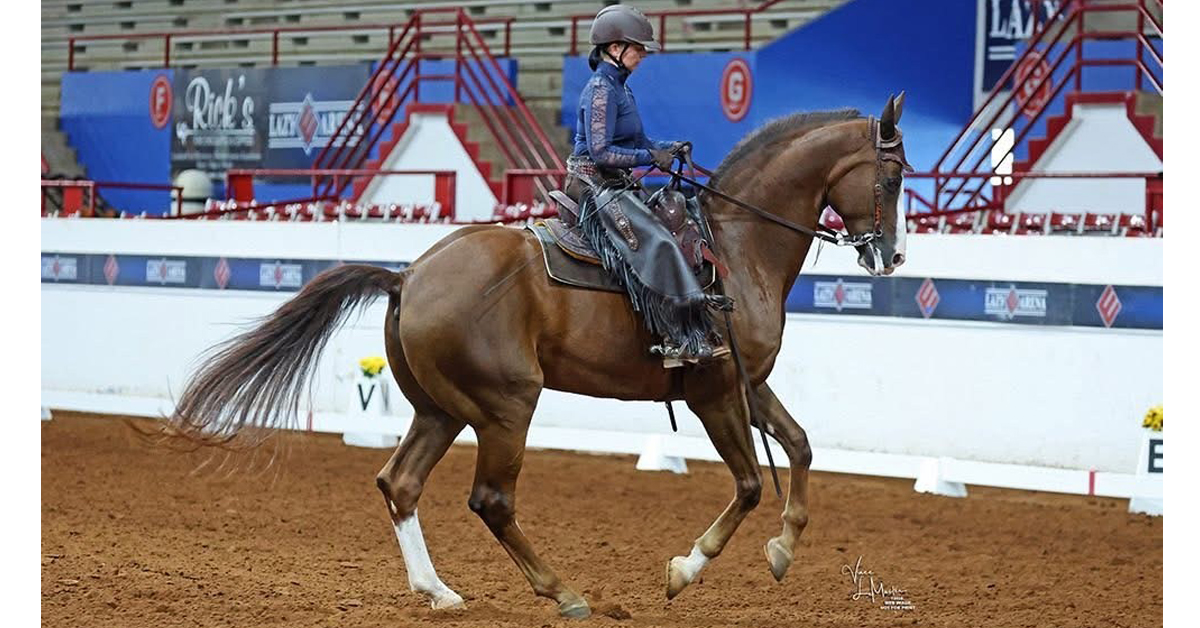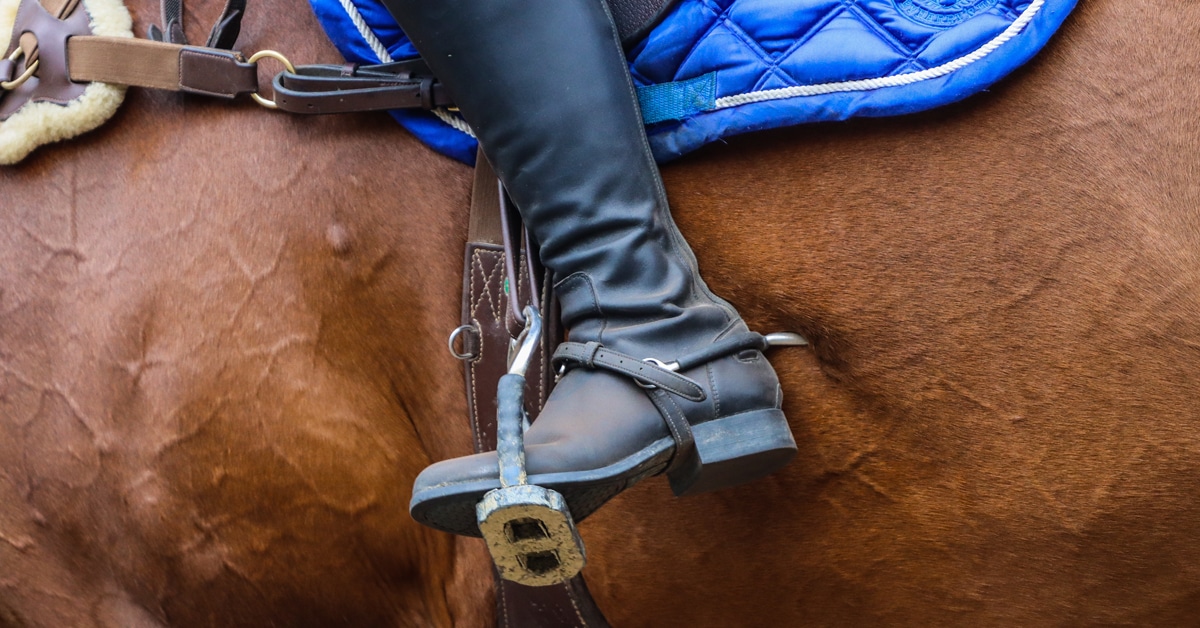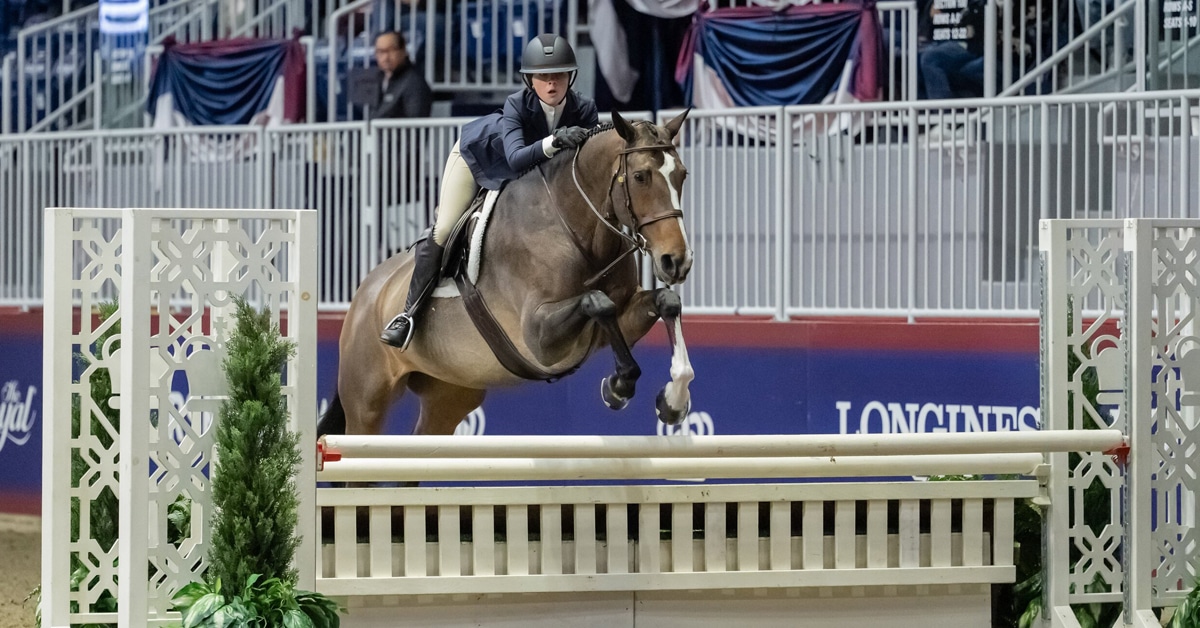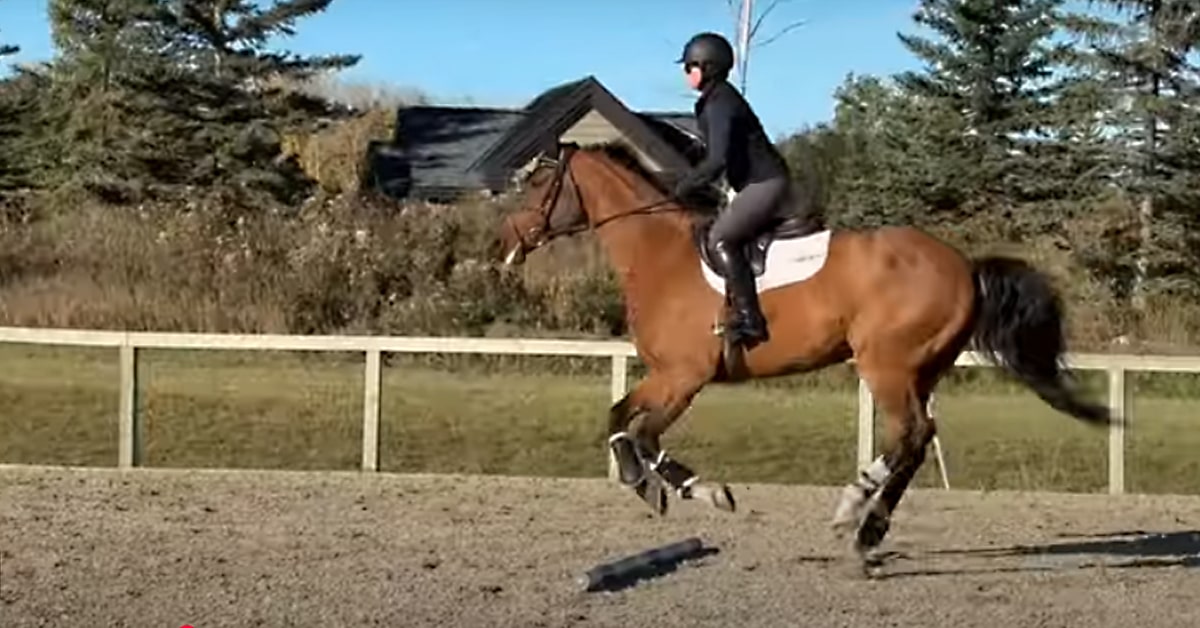Horses are such wonderful animals, and each one is unique. In terms of jumping, they each have their own style, their own stride length, and they can all react differently when presented with the same scenario. Understanding your horse and its uniquities is paramount to having a good relationship and long-lasting success in the sport.
The exercise we will discuss here is designed to help riders feel how their horse lands from the first jump of a line and how they take their first stride. Some horses are bold into a line and can’t wait to get to the second jump, others may land more balanced or shallow as their focus remains on the first jump. Naturally, the way the horse and rider meet the first jump of the line will also greatly affect how the line plays out. So many variables, so little time!
This exercise, and how we address it, is primarily for a fabulous jumper that doesn’t always take a big first stride into the line.
The Set-Up
We start with two verticals set 69’ (five strides) apart. Get comfortable jumping the line in both directions, with the jumps set at a normal warm-up size for whatever level the horse is currently training.
Once the horse is warmed up and everyone is comfortable and understands the distance for the five strides in the line, add in a landing rail after the first jump. In the video below we start with the landing rail set at 9’6” – a normal and comfortable distance for this height of jump. Observe if your horse reacts to the landing rail by studying it, and try to encourage the horse to stay in rhythm across the jump and over the rail. Sometimes a tendency can be to come in a bit too big and let the rail “back the horse up” – but we don’t want that in this case; we look for the rhythm and stride to be consistent.
Once the horse is comfortable with the rail, we start to lengthen the distance from the jump to the rail. We moved it to 11’ in order to encourage our horse to land and take a more ambitious step into the line.
If your horse struggles to understand the change in distance to the rail, there are a few things to watch for:
- make sure you are still coming to the line with the right stride length and possibly increase the base canter by a small amount;
- practice your timing on the landing stride by adding a cluck or a quick bump with your leg to indicate you would like a more forward thinking stride across the rail;
- and finally, ensure that your hand reconnects with the mouth softly on landing, considering leaving your hands forward to the mouth until after the landing rail.
As always, try to put yourself in your horse’s shoes and understand what is going through their mind. Be critical and aware of your riding to make sure you are communicating what you think you mean (notice, for example, if by regaining connection to the mouth on landing your horse possible thinks you are indicating to slow down or shorten stride). We always strive to remove unnecessary impediments and keep things as simple as possible – that is when your horse’s good intentions and natural ability to think and respond will shine through the best.
Once the landing rail has been lengthened to your desired amount, you should find your natural stride after the rail getting you closer to the second jump. As with every exercise, there is no rush to get it all done at once – take your time and make sure you and the horse understand the task at hand, and consider repeating a second day if needed. Another modification to the exercise is to include a second rail after the landing rail, and vary the distance from 11’ to 12’ if you feel the need to stretch the stride further into the line.
The Overly-Ambitious Horse
If you happen to have a horse that has too big of a stride landing into the line, or the horse is perhaps too ambitious or strong jumping out of the line, we can use the exercise essentially in reverse. Start with a comfortable landing rail (11’ or so), and gradually shorten the landing rail distance to encourage the horse to focus more on the first jump of the line.
The rider should consider their own body position over the jumps, securing their leg down at takeoff to ensure they land in good balance. Additionally the rider could use their voice to calm and slow the horse on the landing side, and finally, consider a downward transition before the second jump as reinforcement if needed.
Where a horse naturally likes to land is one of the biggest factors affecting how a line will ride, and we can likely affect that only so much and more in some circumstances than others.
Improving adjustability within the gaits is a another great way to increase your odds of successfully navigating a technical section of the course. Combining adjustability with understanding and feeling how our horse has landed in a line gets us so much closer to having a harmonious experience jumping anything we face. This is especially helpful for hunters and equitation horses who want to look as smooth as possible while still being effective, as well as for all riders looking to improve their connection with their horse.
The Latest
